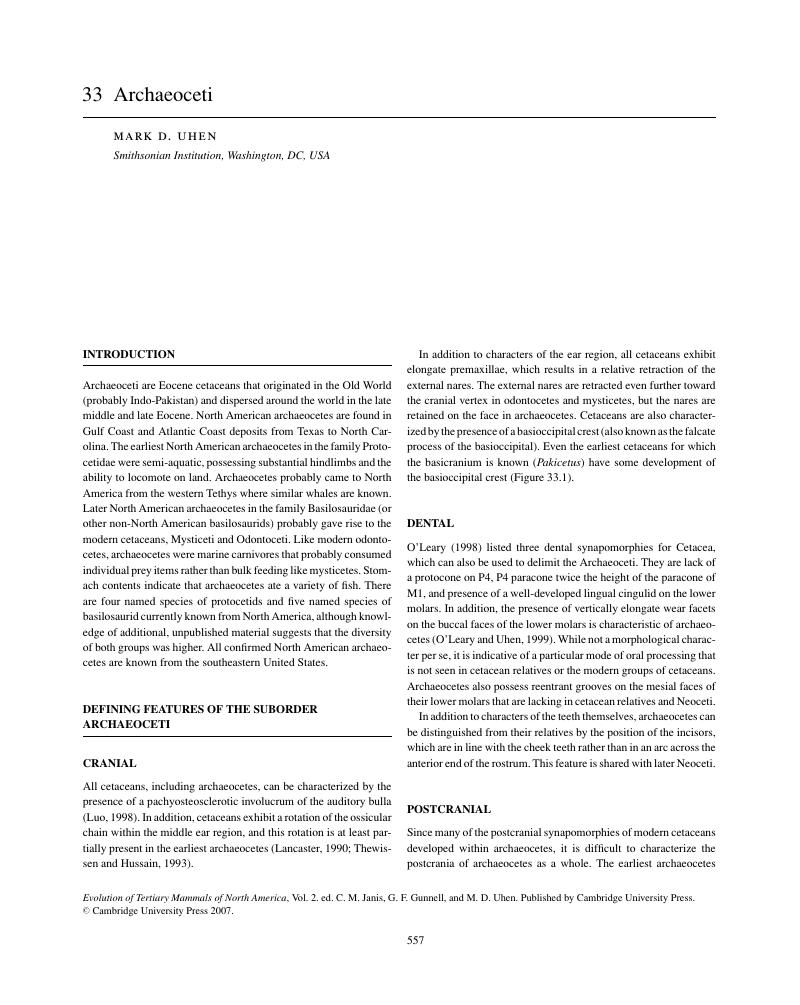Book contents
- Frontmatter
- Contents
- Contributors
- 0 Introduction
- Part I Non-eutherian mammals
- Part II Insectivorous mammals
- Part III “Edentata”
- Part IV Archonta
- Part V Glires
- Part VI Marine mammals
- 30 Marine mammals summary
- 31 Otarioidea
- 32 Phocidae
- 33 Archaeoceti
- 34 Odontoceti
- 35 Mysticeti
- 36 Sirenia
- 37 Desmostylia
- Addendum
- Appendices
- Index
- References
33 - Archaeoceti
from Part VI - Marine mammals
Published online by Cambridge University Press: 07 September 2010
- Frontmatter
- Contents
- Contributors
- 0 Introduction
- Part I Non-eutherian mammals
- Part II Insectivorous mammals
- Part III “Edentata”
- Part IV Archonta
- Part V Glires
- Part VI Marine mammals
- 30 Marine mammals summary
- 31 Otarioidea
- 32 Phocidae
- 33 Archaeoceti
- 34 Odontoceti
- 35 Mysticeti
- 36 Sirenia
- 37 Desmostylia
- Addendum
- Appendices
- Index
- References
Summary

- Type
- Chapter
- Information
- Evolution of Tertiary Mammals of North America , pp. 557 - 565Publisher: Cambridge University PressPrint publication year: 2008
References
- 1
- Cited by

